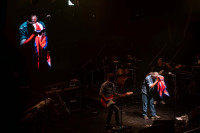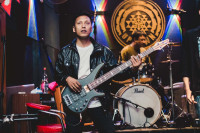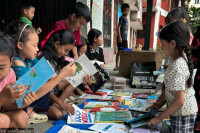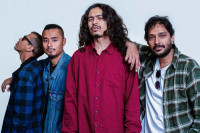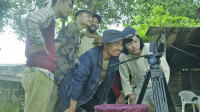Entertainment
Interrogating otherness and the politics of identity
Mekh Limbu has forgotten his mother tongue. Growing up in Dhankuta, Limbu’s parents and relatives spoke the Limbu language but whatever little he picked up then, he doesn’t know anymore. When asked how he grew to forget the language of his birth, Limbu goes visibly irked.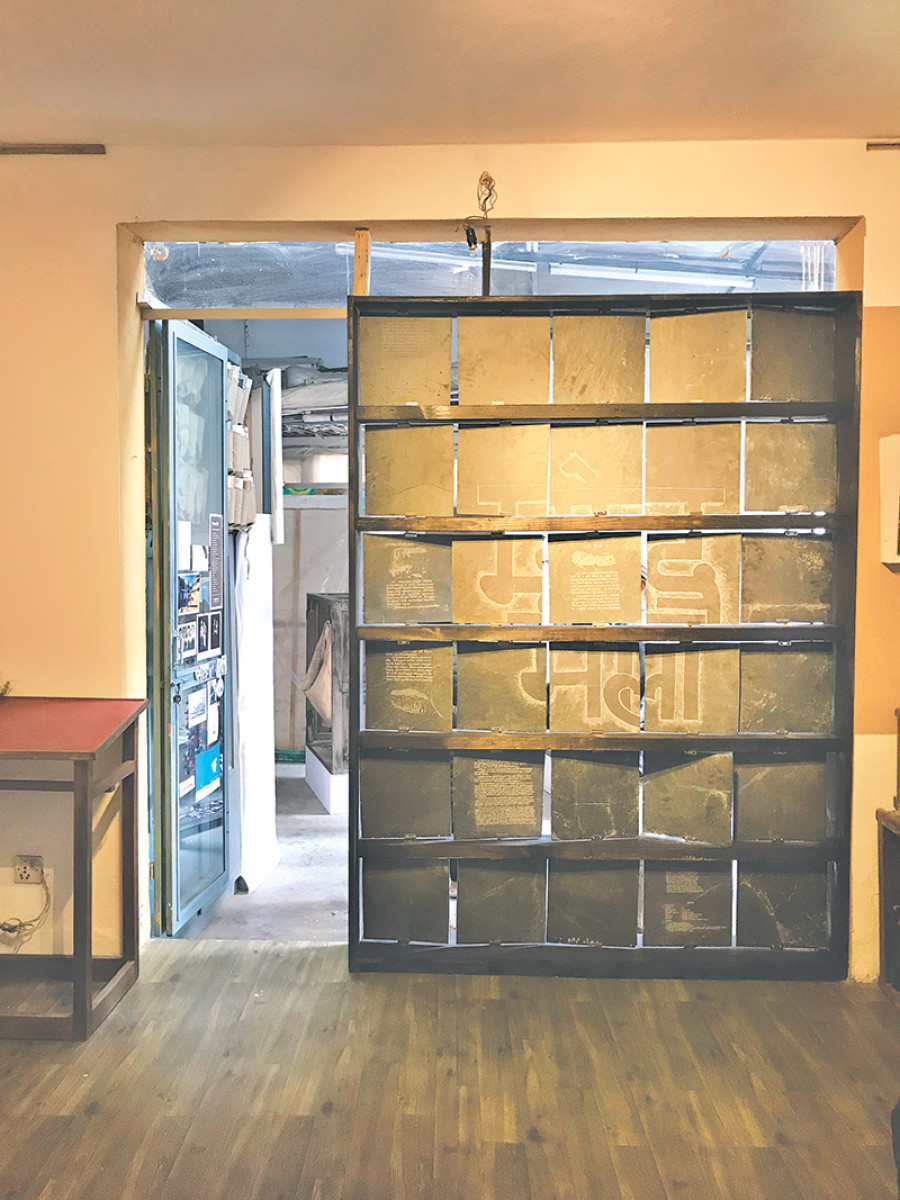
Timothy Aryal
Mekh Limbu has forgotten his mother tongue. Growing up in Dhankuta, Limbu’s parents and relatives spoke the Limbu language but whatever little he picked up then, he doesn’t know anymore. When asked how he grew to forget the language of his birth, Limbu goes visibly irked.
“They’ve destroyed it,” he says, gesturing towards a shelf that contains books, notes and writings from his father’s archives. All of the material is in Nepali. They glorify the monarchy and the then Panchayat system. This shelf is part of an art exhibition that is part of Photo Kathmandu 2018, on display at the artist collective Artree’s studio in Tripureshwor. Laced with nostalgia and regret, Limbu’s installation is aptly titled, ‘How I Forgot My Mother Tongue’.
Themes of otherness and cultural ostracisation feature heavily in the works of all the artists who feature in the collective exhibition that Limbu’s installation is a part of. Entitled ‘Opposite Dreams: The Politics of the Local’, the exhibition includes works by six artists that explore how ethnic communities, their language and culture, have been silenced by the hegemony of the Nepali state and its dominant cultural narrative.
Subas Tamang’s Mahendra Mala, for instance, features a total of 30 square pieces of slate that are carved with texts from the eponymous Mahendra Mala, which was part of the curriculum designed by the Panchayat-era government.
“Mahendra Mala glorified the country’s wildlife and landscape, but when it came to the people who inhabited these spaces, not a single word was written,” explains Tamang. “In some cases, people from the indigenous community are portrayed in a completely negative light. For instance, in one particular story about a Danphe, it is mentioned that the Danphe does not travel to the Tarai because of its fear of Lama dai. Why is Lama dai portrayed as a person to be afraid of?”
This exploration of the denigration of indigenous cultures, traditions and lives continues in Lavkant Chaudhary’s Masinya, which takes its title from the then Muluki Ain. Masinya means something that “can be destroyed if found guilty” and people such as the Tharu fell under this category. The work highlights how a prejudiced legal system
ostracised and dehumanised certain communities. Masinya features 13 water pots, carved with legal proclamations—Ek Dharma, Ek Desh, reads one of them. The figure of former president Ram Baran Yadav also adorns one of the pots, an allusion to how such prejudices have continued.
The singular theme of cultural colonisation is most explicit in Sheeelasha Rajbhandari’s installation, pertinently titled Cultural Colonisation. The work comprises of traditional indigenous garb, with labels from international brands and symbols. “Today when we see a man in a daura suruwal, we are surprised,” she says. “It’s a given that we wear imported clothes. It is just another symbol of how we as a country have lost our culture and traditions.” Rajbhandari’s work, however, speaks to a larger colonisation, one wrought by forces of globalisation, rather than nationhood and a
country that sought to suppress difference in favour of uniformity.
Continuing with Photo Kathmandu 2018’s themes of identity, the exhibition explores the understanding that history is written by those in power and that in the quest for a collective, uniform identity, much of Nepal’s diversity has been put to the axe. Movements like the armed insurgency, the Madhes Movement and the indigenous rights movement have all called into question what was once accepted as fact—that Nepal is a country that is religiously Hindu, culturally Khas and speaks Nepali. Exhibitions like these interrogate that narrative and seek to bring to light what has been marginalised over the centuries, first by the Shah kings, then by the Ranas, and now by a ruling elite that consists largely of certain castes and certain ethnicities.




 7.12°C Kathmandu
7.12°C Kathmandu
